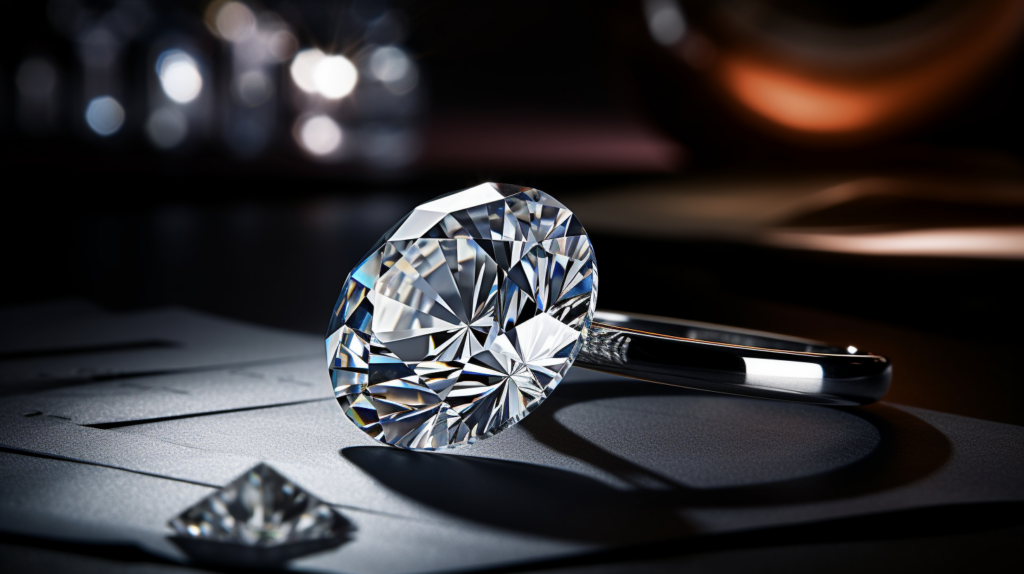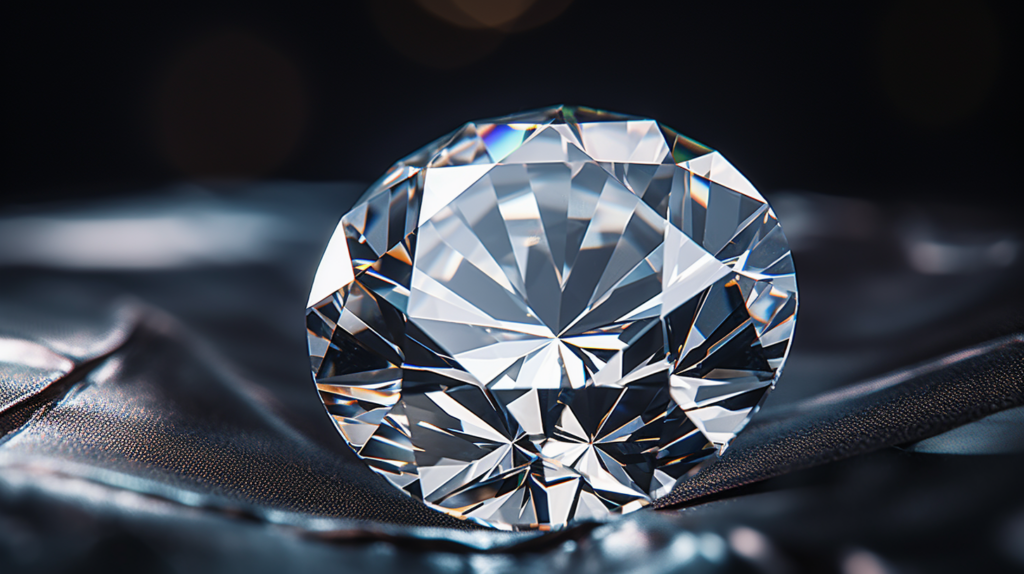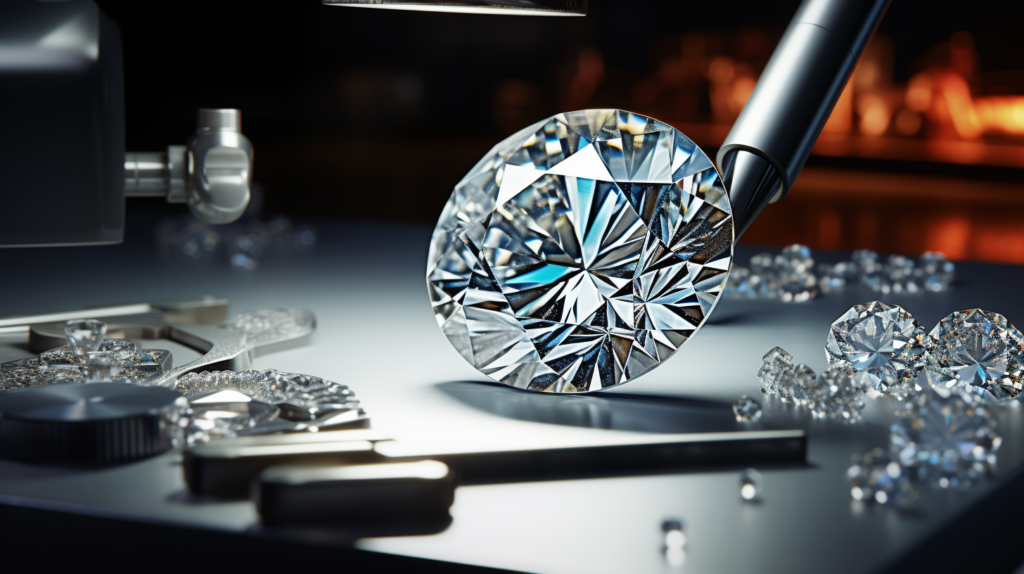As diamond enthusiasts, we’ve always sought the most reliable certifications. EGL, the largest independent network of gemological laboratories, claims to provide just that.
In this article, we’re talking about EGL Diamond Certification Review, a group that grades diamonds. People have been worried about how reliable their reports are. BrighterGuide will compare EGL with other well-known places that grade diamonds and talk about some issues with how EGL grades diamonds.
Key Takeaways
- EGL, while being a large gemological network, faces concerns over grading inconsistencies and the reliability of their certification reports.
- Compared to industry leaders like GIA, EGL often overestimates diamond color and cut grades, leading to questions about their certification’s credibility.
- KFor accurate and consistent diamond grading, GIA certifications are more widely recognized and trusted in the diamond industry.

In this post, we’ll explore:
What is an EGL Diamond Certification
An EGL Diamond Certification is a report from the European Gemological Laboratories. These reports are used in many countries to say how good a diamond is. We’ll talk about EGL’s history, issues with how they grade a diamond’s color, and concerns about how they grade a diamond’s cut.
In discussing EGL Diamond Certification, we’ll explore its brief history, the issues with EGL color grading, and the concerns surrounding EGL cut grading.
Brief History of EGL
EGL, established in 1974, claims to be the largest independent network of gemological laboratories in the world. With a global presence, EGL has issued diamond grading reports from countries such as India, South Africa, Platinum (Israel), and the USA.
EGL certificates have been widely used in the diamond industry, although their reliability has been questioned in recent years. One of the main concerns with EGL diamond grading reports is the lack of consistent standards and procedures across all labs. This has led to varying diamond quality grades, with EGL often overestimating cut and color grades compared to industry leaders like GIA.
Additionally, EGL Europe has been known to offer preliminary reports, and there have been instances where favorable grades were given to generate certificate revenue. These issues have resulted in EGL certificates being considered unreliable in the diamond industry.
EGL Color Grading
We have found that EGL color grading can be a contentious issue in the diamond industry. EGL, or European Gemological Laboratories, is one of the major diamond certification labs in the world. Their EGL diamond grading reports evaluate various aspects of a diamond, including clarity grades and color grades.
However, there have been concerns about the accuracy and consistency of EGL color grading. Some diamond merchants argue that EGL tends to overestimate the color grades of diamonds compared to other reputable labs like GIA. This discrepancy in color grading can have a significant impact on the value and pricing of EGL-graded diamonds.
It’s important for consumers and industry professionals to be aware of these issues when considering an EGL diamond certification review.
Now, let’s delve into another contentious topic: EGL cut grading.

EGL Cut Grading
In this EGL diamond certification review, we will look at how EGL cut grading can change how good a diamond is overall. Cut grading is an important part of diamond grading because it has a direct effect on how bright and sparkling the diamond is.
Here are five key points to consider about EGL cut grading:
- EGL uses a grading system to assess the cut of a diamond, taking into account factors such as proportions, symmetry, and polish.
- Diamond experts at EGL follow specific diamond grading techniques to evaluate the cut quality, ensuring accuracy and consistency.
- The cut grade assigned by EGL can greatly influence the value and desirability of a diamond, as it directly affects the stone’s overall appearance and light performance.
- EGL’s cut grading system is known for being more lenient compared to other grading laboratories, which can result in higher cut grades being assigned.
- It’s important for consumers to understand the differences in cut grading standards between EGL and other grading laboratories, such as GIA, to make informed decisions when purchasing a diamond.
Understanding EGL cut grading is essential when reviewing an EGL diamond certification. It provides valuable insights into the quality and characteristics of the diamond, helping consumers make informed choices.
Now, let’s delve into the EGL diamond grading standards to further explore the intricacies of EGL certifications.

EGL Diamond Grading Standards
When it comes to EGL diamond grading standards, we should be aware of the potential variations in quality assessments. EGL, or European Gemological Laboratories, is a well-known diamond grading institution with multiple branches worldwide, including EGL Los Angeles. Of course, it is important to keep in mind that the Gemological Institute of America (GIA) and EGL use different terms and standards when rating gems.
One big area where EGL grading standards can be different is how clear or dark a diamond is. EGL has been known to overestimate diamond color grades compared to GIA. This means that a diamond graded as a certain color by EGL may receive a lower color grade if assessed by GIA. It’s crucial for consumers to understand these discrepancies and make informed decisions when purchasing diamonds.
Another area where EGL grading standards may deviate is in the cut grade of a diamond. EGL’s cut grading can sometimes misrepresent the actual quality of a diamond. For example, an EGL Ideal Cut diamond may not receive the same cut grade when evaluated by AGS or GIA. AGS and GIA are known for providing more accurate cut grading assessments.
These variations in EGL diamond grading standards can have consequences, such as overgrading a diamond’s quality. It’s important for consumers to be aware of these potential discrepancies and to seek out cutting-edge diamond viewing tools and reputable grading institutions, like GIA, to ensure accurate assessments.
In the next section, we’ll examine sample EGL grading reports to further understand the specific details and nuances of EGL’s diamond grading standards.

Sample EGL Grading Reports
As we delve into the topic of sample EGL grading reports, it’s essential to examine the specific details and nuances of EGL’s diamond grading standards. EGL’s diamond grading services are conducted by expert gemologists who carefully evaluate each diamond to provide accurate and detailed reports. These reports play a crucial role in determining the actual quality of a diamond and are highly valued by consumers and industry professionals alike.
Here are some key features of sample EGL grading reports:
- EGL provides comprehensive information about the diamond’s characteristics, including its carat weight, color grade, cut grade, and clarity range. This allows consumers to make informed decisions about their diamond purchases.
- EGL’s reports highlight the finest cut quality of a diamond, which greatly affects its brilliance and overall appearance. This information is particularly important for those seeking diamonds with exceptional sparkle.
- The clarity range mentioned in EGL reports provides insights into the presence of any internal or external flaws in the diamond. This helps buyers assess the diamond’s overall clarity and understand its unique characteristics.
- EGL grading reports offer a detailed analysis of the diamond’s color grade, allowing consumers to understand the specific hue and intensity of the stone. This information is crucial for individuals who prioritize color when selecting a diamond.
- EGL’s reports provide a comprehensive overview of the diamond’s characteristics, enabling customers to confidently assess the quality and value of the diamond they’re considering.
Differences Between Diamond Certifications
Diamond certifications are handled by the Gemological Institute of America (GIA) and the European Gemological Laboratory (EGL).
Although both groups offer diamond certifications, there are some differences.
These differences include variations in grading standards, consistency in grading practices, and the overall reputation and acceptance of their certificates within the diamond industry.
European Gemological Laboratory (EGL)
We have learned about the differences between diamond certifications, specifically regarding the European Gemological Laboratory (EGL).
EGL is one of the largest independent networks of gemological laboratories, offering certifications for diamonds and gemstones. However, there are some notable differences and issues with EGL certifications that buyers should be aware of:
- EGL tends to overestimate diamond quality in color and cut grading, leading to potential discrepancies in grading compared to other organizations.
- EGL’s lack of unified practices and philosophy can result in varying diamond quality grades.
- Some diamond industry professionals consider EGL certificates to be unreliable.
- EGL Europe offers preliminary reports to diamond dealers, which may influence the grading process.
- RapNet, a leading diamond trading platform, has banned diamonds with only EGL reports.
Despite these concerns, EGL certifications can still provide valuable information for diamond buyers. But when buying a diamond, it is important to keep these things in mind.
Moving on, let us look at the GIA’s (Gemological Institute of America) certifications.
Gemological Institute of America (GIA)
The GIA is important for diamond grading. In contrast to the European Gemological Laboratory (EGL), GIA grades diamonds consistently. This is really important for people who sell diamonds and for stores that offer diamond jewelry.
One area where GIA is really strong is in grading a diamond’s cut. The cut impacts how shiny and sparkly the diamond looks. GIA gives detailed information about this, making it easier for buyers to know what they’re getting.
GIA certifications are trusted in the diamond world. A GIA-certified diamond is guaranteed to be high-quality.
The difference between GIA and EGL is crucial. Certification can greatly impact a diamond’s value. Diamond buyers should choose GIA because they know they are getting plenty for their money.

EGL Certification and Diamond Price
How does EGL certification impact diamond prices? Diamond prices can change a lot when they get EGL certification. Here are five key points to consider:
- Diamond Grading: EGL certification is a very important part of figuring out how good a diamond is. It provides an evaluation of the diamond’s 4Cs (color, clarity, cut, and carat weight), which directly influence its value.
- Diamond Overgrading Scandal: EGL has faced criticism in the past for overgrading diamonds, especially in terms of color and cut. This scandal has raised concerns among diamond shoppers and the diamond trade about the accuracy and reliability of EGL-certified diamonds.
- Diamond Prices: Due to the overgrading scandal and inconsistencies in grading standards, EGL-certified diamonds are generally priced lower compared to diamonds with GIA certification. This is because buyers perceive GIA-certified diamonds as having more reliable and accurate grading.
- Diamond Production: The availability of EGL-certified diamonds in the market is relatively higher compared to GIA-certified diamonds. This abundance can also contribute to the lower prices of EGL-certified diamonds.
Buying a diamond with an EGL certificate requires balancing cost savings against the risks of inconsistent grading. Buyers should research the EGL laboratory’s reputation and consult experts before buying.
Should I buy a diamond with an EGL certificate?
When buying an EGL-certified diamond, several factors must be considered. EGL diamond certification has been debated in the industry due to grading inconsistencies and overgrading. While EGL certificates may offer a more favorable grading for a diamond, it’s important to understand the consequences of diamond overgrading.
When going through the diamond buying process, it’s crucial to have a clear understanding of the diamond grading system. EGL certificates may not provide the same level of accuracy and consistency as other reputable laboratories like GIA. This can affect diamond quality and value.
Diamond buyers must verify grading. Trustworthy certificates may give you more peace of mind than EGL certificates. You need a loose diamond to examine a diamond. The diamond’s characteristics can be better assessed.
Conclusion
The world of diamonds is dazzling, but it’s also rife with complexities that can mystify the average consumer. With so many factors like clarity, shape, and type influencing a diamond’s worth, it’s crucial to have a reliable method of assessment. The last thing anyone wants is to pay a fortune for what they think is a high-quality diamond, only to discover later that its grade was inflated. This is where the importance of a trustworthy diamond grading laboratory like the Gemological Institute of America (GIA) comes into play.
However, when you obtain a diamond certified by GIA, you sidestep these pitfalls. GIA’s rigorous and consistent grading methods offer buyers a level of confidence that is indispensable in this high-stakes market. With a GIA certification, you know you’re getting what you pay for—no tricks, no inflated grades, just transparent and reliable information.
The bottom line? If you’re in the market for a diamond, GIA certification isn’t just a stamp of approval; it’s a safeguard against regret. By choosing GIA, you’re not just buying a diamond—you’re also buying peace of mind.
Sources
BrighterGuide is dedicated to providing accurate and relevant information as you explore the wonderful world of diamonds and jewelry. To this end, our writers refer to primary information sources in building each article that appears on this website. These include, but are not limited to, published news articles, government portals, research papers, and more.
- What You Need To Know About EGL Diamond Grading Reports. (2020, May 5). Ritani. https://www.ritani.com/blogs/news/egl-diamond-grading-reports
- EGL USA Gemological Laboratory. (n.d.). https://www.eglusa.com/
- EGL certification explained – all diamond. (n.d.). All Diamond. https://alldiamond.co.uk/pages/egl-certification-explained